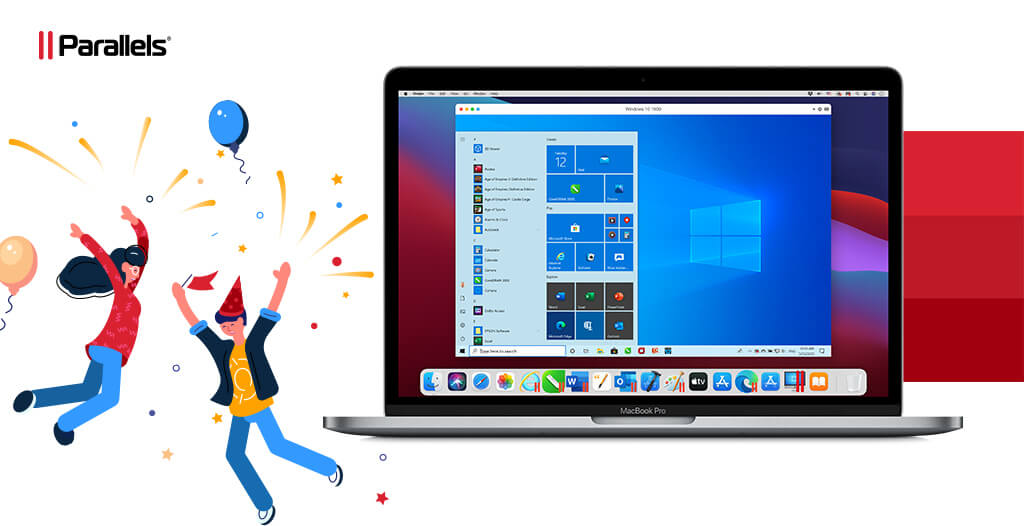

- #Parallels desktop 12 for mac forums mac os x
- #Parallels desktop 12 for mac forums mac os
- #Parallels desktop 12 for mac forums update
- #Parallels desktop 12 for mac forums pro

This means that you need to go to Windows' device manager and uncheck the box that allows the adaptor to power down when running on battery. Second, one essential point is that NVivo requires the Ethernet adaptor to be active when the program first opens, which will allow it to check the adaptor's Mac Address. This will ensure that it only uses the LAN Ethernet Mac Address. In order to avoid this problem and the potential resulting conflict with a Parallels virtualization of Windows XP, it is best to disable all network adaptors before installing and validating NVivo for the first time. This may be an artifact of using a Bootcamp version of Windows. First, the QSR tech support (the company that makes NVivo) indicated that when I first validated NVivo 8, it actually used the Bluetooth Mac Address, which seemed to be a mistake. Two more issues emerged as far as NVivo was concerned. This should make it so that both methods of running the single installation of Windows XP (and any software) then check the same hardware address, and thus maintain the valid license. Go to Virtual Machines > Configure, select the network adaptor, and change its address to the one you copied from the actual machine in the Bootcamp installation.
#Parallels desktop 12 for mac forums mac os
Then log back in to Mac OS X, open up Parallels without booting into Windows XP. This was a simple fix - I had to log into my native (Bootcamp) installation of Windows XP, find the Mac Address of the LAN Ethernet adaptor (go to Start > Run and type in "cmd" and enter to get a command prompt in the command prompt type in "ipconfig /all" and hit enter to see the Mac Addresses of the network adaptors the Local Area Network Ethernet adaptor is the one of interest here).
#Parallels desktop 12 for mac forums pro
This issue created a problem for booting into Windows via both Bootcamp and Parallels, because the virtual machine Ethernet Mac Address did not match the Hardware Mac Address of my MacBook Pro (the one used by Bootcamp). It turns out that many programs use the Hardware Mac Address (physical address) to detect if the software was moved from one machine to another after the license was activated. The problem I had was that software such as NVivo and Adobe Acrobat Professional would invalidate the license every time I would boot into Windows via the other method and launch the program.

However, a few problems came up in the process, and I wanted to share on this forum the solution that I arrived at with the help of both QSR and Parallels tech support:
#Parallels desktop 12 for mac forums update
However, for those of us who live our lives on a Mac, it is a major pain to have to boot in and out of Windows (and Mac OS X) constantly just to be able to see a few details in NVivo, or to access the program to update some codes, run queries, or whatever.įor me at least, the perfect solution is a dual option of running Windows via either Bootcamp or Parallels, and to have the option to boot into either. It is also important for doing processor intensive tasks, which is important if you NVivo database gets to be quite large. This is important if you deal with resource intensive content, such as high quality video or audio. The native method (Bootcamp) allows all resources on the machine to be dedicated to doing nothing but running Windows and its software, such as NVivo. I found that recent versions of Parallels will actually import a virtual machine from the Bootcamp installation of Windows, and actually allow you to run Windows either way - natively through Bootcamp or virtually through Parallels.
#Parallels desktop 12 for mac forums mac os x
However, I recently purchased Parallels Desktop (for Mac OS X - I run 10.6, "Snow Leopard"), so that I could access all of my NVivo content while working in Mac OS X. Until recently, I have been running NVivo 8 through a Bootcamp (native) installation of Windows XP.


 0 kommentar(er)
0 kommentar(er)
